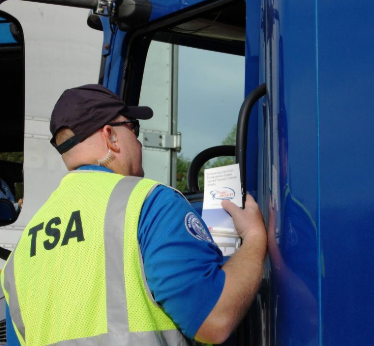TSA Creates Committee to Help Safeguard Railroads and Highways

Technology-enhanced driver training is a key element in the nation’s effort to safeguard the supply chain against terrorism
The United States Transportation Security Administration (TSA) has selected 35 representatives, including two from the American Trucking Associations and one from the Owner-Operator Independent Drivers Association, to become voting members of its newly created Surface Transportation Security Advisory Committee. Voting members will serve two-year terms, and will report to TSA Administrator David Pekoske on surface transportation security matters.1 “Trucking is the linchpin of the nation’s supply chain,” says John Kearney, CEO, Advanced Training Systems LLC. Kearney, whose company is a leading designer and manufacturer of virtual simulators for driver training, among other applications, adds, “The TSA clearly understands that drivers will be front and center in remaining on the alert for supply-related threats.”
Trucks transport a significant portion of the more than three billion tons of hazardous material shipped in the U.S. every year. The most common cargoes are flammable liquids, in particular gasoline, which needs to be transported on a frequent basis.2 The U.S. Department of Transportation Pipeline and Hazardous Materials Safety Administration estimates that there are more than 800,000 hazardous materials shipments every day.3
A major obstacle to the unimpeded flow of these shipments, both from a safety and logistical standpoint, is a severe and growing shortage of long-haul truck drivers. Recent estimates put the shortage at 60,000 drivers—a number that could easily reach 100,000 in just a few years.4 To close the gap, the National Association of Chemical Distributors, among others, has been lobbying for the passage of the 2018 DRIVE-Safe Act, which would lower the federal age requirement for interstate drivers from 21 to 18, thus opening a solid career path to millions of recent high-school graduates.5
Electronic simulators such as those routinely used in training airline pilots, says Kearney, can and should play a major role in preparing the coming cohort of new long-haul truckers. One significant advantage of simulators over traditional behind-the-wheel training is equipment cost: simulator training is substantially less expensive than an actual tractor-trailer highway rig. Another and in some ways more important advantage is the ability, in a simulator, to encounter and learn to cope with driving situations that are either too rare or too dangerous for behind-the-wheel training, such as black ice, blinding snow, or heavy winds.
“This is standard for the aviation industry,” says Kearney, “and it should be for the motor freight industry as well. The nation’s economy—and the security of its supply chain—depend on a corps of technologically adept, well-trained operators ready to deal with any situation they encounter. They deserve the best possible training, and we deserve for them to have it.”
Category: Featured, General Update, News, Safety










